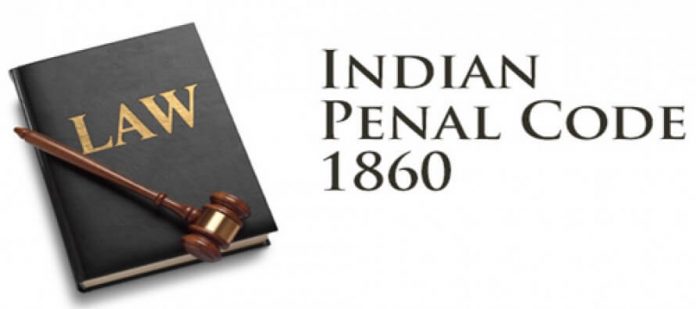This article is written by Samriddhi Tripathi, LLM student from Christ University, Lavasa Campus. In this article, the author has explained in detail the provisions of criminal conspiracy and other aspects related to criminal conspiracy as defined under Section 120A and 120B of IPC.
This article has been published by Sneha Mahawar.
Table of Contents
Introduction
Criminal conspiracy is defined under Sections 120A and 120B of the Indian Penal Code, 1860 (IPC). Chapter V-A of IPC was inserted through an Criminal Law Amendment Act, 1913. The IPC deals with the offences which are against the human body, property, public tranquility, states, etc. Criminal law deals with the offences which affect society at large. It is often said that a crime is done with the help of more than one individual. It is not necessary that all individuals play a major role in committing a crime, for example, if a person instigates someone to commit a murder, that is to abet someone. He will also be entitled for punishment.
This article will enlighten about the history of criminal conspiracy. The essential ingredients for an act to be a conspiracy with certain related provisions and case laws.
Criminal conspiracy (Section 120A IPC)
The meaning of criminal conspiracy as per Section 120A of Indian Penal Code is an agreement done by two or more persons for the commission of an illegal act. The act committed will be punishable with death, imprisonment for life or imprisonment of either description of term two years or more. For instance: Ram had a disagreement with Ajay on a particular point. Ram thought to take revenge for this he contacted his friend Shyam and Mohan. They all together initiated the plan for causing grievous hurt. In this instance the agreement to cause grievous hurt will be sufficient to make them liable for criminal conspiracy.
History of criminal conspiracy
Criminal conspiracy did not exist earlier. In 1611 a case named Poulterer’s Case was decided by the English Court introducing the concept of conspiracy.
Facts
In 1611 a case was filed by Walters in respect to a robbery allegedly committed by Stone with other defendants. Stone brought an enormous number of people to the court for the purpose of attesting a document stating that he was in London at the time of offence. The Jury discharged Stone. Thereafter, Stone filed a suit against Star chamber for the loss of reputation. The defendant tried to convince Stone to settle the matter out of court, but failed. The procedure was initiated by the court, the defendant accused Stone and he also intimated the witnesses.
Held
The court held that if there is any evidence of conspiracy between the defendant, whether Stone was falsely indicted or acquitted will be considered as an offence.
The House of Lords in Mulcahy vs. R.(1868) stated that the intention between the two or more is not important but there should be an agreement between two or more for the purpose of committing an unlawful act. The preparation of an illegal act is punishable at first instance itself.
Ingredients for an act to be criminal conspiracy
In Rajiv Kumar vs. State of U.P., (2017) 8 SCC 791 the essential ingredients of criminal conspiracy are stated herein below :
(i) there must be an agreement between two or more persons;
(ii) the agreement which is formed must be in relation to committing an illegal act or an act done by illegal means.
Thus, it is important to have an agreement between two or more persons for the purpose of the commission of an illegal act by illegal means which is regarded as sine qua non of criminal conspiracy.
Sine qua non means that which is considered to be essential.
Other provisions with respect to criminal conspiracy
The other provision mentioned in IPC with respect to criminal conspiracy –
i) Abetment under Section 107 IPC- Abetment means if any person instigates, procure, assists or in anyway convinces another person to commit an offence or had participated in the conspiracy of an offence will be held liable,
ii) An act which constitutes an offence of conspiracy to wage, attempt to or abet war against the Government under Section 121A IPC- The section covers all the ways in which the citizen of the state or a foreign national plans to disturb the peace of the state, whether being a active participant or an abettor (a person who instigates to do an illegal act). It cannot be considered under the point of sedition as it includes showing hatred or disaffection to the country.
iii) Commission of an offence under Section 310, Section 311, Section 401 and Section 402 IPC- Section 310 deals with Thug stating that if a person is habitually being associated with two or more person with the purpose of committing an act of robbery or child-stealing with the aim of causing murder. Section 311 deals with the punishment of a thug. The person involved will be punished for life imprisonment and will also be liable for fine.
Section 401 deals with Punishment for belonging to a gang of thieves. The section specifies that if any person is associated with the gang of persons with the motive of committing theft, robbery, dacoity or any illegal act with the association of gang will be liable for imprisonment extending to seven years of term and be liable for fine.
Section 402 deals with the assembly of persons for the purpose of committing dacoity. The person involving five or more associated with the aim of committing dacoity will be liable for imprisonment extending seven years and fine.
Section 120B IPC : punishment for criminal conspiracy
The punishment for the offence of criminal conspiracy is dealt with under Section 120B of IPC. Section 120B is divided into two parts,
i) The first part states the offence committed which is punishable by death, life imprisonment or imprisonment for a term of two years or more, if no punishment had been mentioned in the code for the offence then such person will be considered the same way the person has aided or abetted the crime.
ii) The second part states that if a person was a party in the conspiracy, he shall be punished with imprisonment for a term of six months, fine or both. If the conspiracy which was planned fails then the person will be liable for fine.
If we see the above mentioned provision Section 120B, it has been classified on the basis of nature, gravity and punishment of the said offences.
Cognizance of court in the criminal conspiracy
Section 196(1)(b) of the Code of Criminal Procedure, 1973 has stated in respect to cognizance of a court in a criminal conspiracy. The court cannot take any cognizance of the case in respect to criminal conspiracy without getting the previous sanctions from the Central Government or the State Government.
Proof of conspiracy
Proving a conspiracy with the help of direct evidence is difficult. There is a saying: “A person is innocent until proven guilty”. So, if a person is made guilty there should be evidence stating the offence being committed. The support of direct evidence or circumstantial evidence is taken. The planning for the conspiracy is done in a private place, hence it makes it difficult to find any evidence in regard to the conspiracy which has been planned. It is a complicated task to find evidence in respect to the date of initiation of the conspiracy, the parties involved, etc. Section 10 of the Indian Evidence Act, 1872 has also mentioned in respect to the action of conspirators.
Section 10 of Indian Evidence Act, 1872
This section is in relation to the admissibility of evidence. It states that anything which has been said, written or been done by anyone person in respect to the common intention of all the conspirators. This will be considered enough to prove the other conspirator guilty. The conclusion is if a conspiracy is proved against one person it will be considered as proven for the other involved if the court is satisfied. Provided these grounds should also be satisfied –
i) There must be an agreement between two or more persons or a reason to believe that two or more persons have conspired to commit a wrongful act.
ii) Anything which is said, written or been done by any of the conspirators was in regard to the common intention of all the others and will be considered as evidence against the other.
Critical analysis of criminal conspiracy
The Chapter V-A of IPC was inserted by Criminal Law Amendment Act, 1913. The object of insertion of Section 120A and 120B can be regarded as an attempt in reduce of criminal acts and benefit society at large. Planning plays a major role in achieving certain goals, so if the first stage that is planning is being prevented then the end result that is the criminal act will be curbed. Section 43 of IPC has mentioned the definition of “Illegal” which is a commission of offence, an act that is said to be forbidden by law. For making a person to be liable for the offence of criminal conspiracy he should establish that there was an agreement between the parties. The agreement can be in express or in implied form as the agreement is an important element. The criminal conspiracy does not impose that the evidence should be in favor of all the parties, at least one of the persons establishes that the agreement was made in the purpose of having the similar intention or a meeting of minds then the other conspirator will automatically fall under the provision. The conspirator irrespective of the time of joining will be liable for punishment, provided he would have been joined before the completion of the act.
Cases in respect to criminal conspiracy
Topandas vs. State of Bombay (1956)
Facts of the case
There were four people from Bombay who agreed to do an illegal act between June 1950 and November 1950. There were a series of illegal acts involved. They had forged the bills of entry and presented it as an original copy. Then by coercion induced the Deputy Chief Controller of Imports of Bombay to issue an import license in the name of J. Sobhraj & Co. for the purpose of importing cycles from the UK worth Rs 1,98,960, for importing watches from Switzerland worth Rs 3,45,325, for importing artificial silk piece goods of the value Rs 12,11,829 The charges imposed against the accused were under Section 471, 465, 34, 420, 34, 120B of Indian Penal Code.
Judgment
The trial court gave the decision for acquittal of all the accused involved in the conspiracy. The appeal was made in Hon’ble High Court. The Hon’ble High Court reversed the acquittal of accused no.1 stating him guilty of all the offence committed including under the offence of Section 120B. Being appealed to Hon’ble Supreme Court, the Supreme Court stated that a person alone cannot be held liable for the criminal conspiracy as he will not be able to conspire with himself. So, if the other co-conspirators are acquitted, the accused alone should not be made guilty for the conspiracy unless it will be proved that he was conspiring from a third person.
Praveen vs State of Haryana (2020)
Facts of the case
On 14th March, 2009 the police was given the duty to escort four accused namely Nadeem, Naushad, Ravi and Sunil from Jaipur Central Jail to the Court of CJM in Bhiwani. The train was at 4:30 hrs from Rewari Railway Station for Bhiwani. As the train reached Nangal Pathani station, four accused boarded the train with the motive to rescue the accused in police custody. So, in the process of rescuing them, they had hit the police and tried to escape from the police custody and tried to snatch the official carbine. It was stated that one of the accused fired upon Arjun Singh, The Head Constable. The police tried to overpower during the process while one accused was throwing chilly powder in their eyes so the accused failed in escaping while the other three succeeded in fleeing. With the help of one accused the name and details were being disclosed of the other assailants. After the investigation was done, all the accused were prosecuted for the offences punishable under Section 224, 225, 332, 353, 392, 307, 302, 120B of the Indian Penal Code and Section 25,54 of the Arms Act.
Judgment
In Parveen vs. State of Haryana in Criminal Appeal No. 1571 of 2020 case, dated 07.12.2021. It was with respect to offence that was committed under Section 120B of IPC. The court gave certain reasoning before the pronouncement of the judgment that when there is an absence of any evidence to show that the meeting of minds between the conspirators for the aim of committing an illegal act, it will not be safe to hold a person guilty for the offence under Section 120B. It is an established principle of Section 120B that there was an agreement between the parties in respect to doing an unlawful act. It is difficult to establish a conspiracy by direct evidence but if there is an absence of any evidence showing the meeting of minds between the conspirators for the object of committing an illegal act, it will not be fair to hold a person guilty.
The Hon’ble Supreme Court held after having close scrutiny of the evidence given in the record, it was considered that the prosecution failed in proving the case in respect to the allegation of conspiracy of the accused in the offence charged. There was no corroborative evidence, except the confessional statement given by the co-accused and it will not be right to hold the conviction and impose a sentence upon the appellant. The findings given by the Trial Court for convicting the appellant on the ground that he was the conspirator in the case is erroneous and stated to be illegal. The Hon’ble High Court has also not taken proper steps in considering the evidence and erroneously confirmed the conviction and has imposed a sentence on the appellant.
Kehar Singh and others vs. State (Delhi Administration) (1988)
Facts of the case
This case is also known as the Indira Gandhi murder case. In June 1984, an operation was initiated by Mrs. Indira Gandhi (acting as Prime Minister) named “Operation Bluestar” to remove the Khalistani extremists. They wanted to build an independent state for the Sikhs within the current North-Western Republic of India. Many Sikh militants took the shelter of the Golden temple and hid there with their arms for planning a conspiracy. So, Mrs. Indira Gandhi ordered the armed forces to remove all the terrorists who were hiding in the Golden temple situated in Amritsar and making a conspiracy against India. At the time of the action, violence arose and the sacred structure Akal Takht was damaged. The Sikh community showed hatred towards Mrs. Indira Gandhi in respect to the incident. A few days later Indira Gandhi had an interview with Irish TV. On 31st October 1984 around 9.00 o’clock in the morning, Indira Gandhi had an interview with Irish TV where she was accompanied by her staff named Head Constable Narayan Singh, Rameshwar Dayal, Assistant Sub-Inspector Nathuram, Attendant and special assistant from her residence at New Delhi.
Beant Singh and Satwant Singh were having prior knowledge in respect to the schedule of the interview. Kehar Singh was the uncle of Beant Singh, he was the one who instigated Beant to kill Indira Gandhi as an act of revenge against Operation Bluestar. So, the plan was formulated and they decided to kill her on the same day of the interview at her residence. In respect to this Beant Singh and Satwant Singh planned their duty in such a way that if Mrs. Indira would pass through the TMC gate and TMC booth, they would be ready with their guns and fire. Beant Singh fired 5 rounds from his loaded gun and Satwant Singh fired 25 rounds from his gun, which caused Indira Gandhi to fall on the ground, and immediately she was taken to All Indian Institute of Medical Science (AIIMS), Delhi. The above-named culprits Beant Singh and Satwant Singh were arrested by the Indo Tibetan police and were shot where Beant Singh died on spot and Satwant Singh got injured. The case was filed against all the conspirators as Beant Singh died on spot, and the charges were against Satwant Singh, Kehar Singh, and Balbir Singh. Under Section 120-B, 109, 34, 302 of the Indian Penal Code and Section 27, 54, 59 of the Arms Act.
Judgment
It was held that it was a criminal conspiracy by the accused as a result of which Indira Gandhi had died. The evidence which was gathered by direct witnesses and it was being collaborated by the post mortem report which was deemed to be evidence, which made Satwant Singh Appeal to dismiss. The evidence produced in the trial court and high court was sufficient to prove the guilt of Satwant Singh and Kehar Singh.
Ram Narain Popli vs. Central Bureau of Investigation (2003)
Facts of the case
The facts of the case are with regard to a transaction that took place by Maruti Udyog Limited during the month of January 1991 – May 1991. There were five transactions that took place involving Rs 43, 93, 65,000/-. It was with regard to the securities from Unit Trust of India (in short UTI). It involved two stages. The Harshad Mehta A-5 is the payee or recipient of the amount. There were certain conditions as the period was fixed for the payment and receipt, the rate of interest was fixed. In the first transaction before receiving the amount Maruti Udyog Limited gave Unit Trust of India units as a form of security and for 2nd, 3rd and 4th transactions the UCO bank issued bank receipts.
The accounts of Maruti Udyog Limited audited the account details and no objections were raised by the internal or external auditors. There was no gain being seen except the gain in the form of a loan by A-5. The A-1, A-2, A-3,A-4,A-5 and PW23 were parties to criminal conspiracy in Bombay and New Delhi. The objective for the conspiracy was to transfer the surplus funds of Maruti Udyog Limited in their account of Canara bank, Sansad Marg, New Delhi to the account of A-5. They were trying to forge the documents and commit a criminal breach of trust. The amount was dishonestly appropriated Rs 38,97,20,000.
They were made punishable under Section 120B, 409, 467, 468, 471 of IPC and Section 13 (IXc),13(2) of the P.C. Act, 1988. The Special Court, Bombay under Special Court which was constituted in relation to the trial of offences relating to transactions in securities Act, 1992.
Judgment
The Hon’ble Supreme Court stated that if there is evidence of an agreement between two or more persons in relation to an unlawful act or by unlawful means he will be convicted for the criminal conspiracy.
- R v Charstny (1991)
Facts of the case
In this case, the husband was part of the illegal act in supplying Class A drugs with other co-conspirators. The defendant (wife) joined her husband in the act having no prior knowledge of other co-conspirators. Hence, she was held liable for the supplying of Class A drugs by the Trial Judge. The defendant contended that she had agreed only with her husband in the commission of the act and challenged the decision of the Trial Judge.
Decision
LJ Glidewell, relying on S2(2)(a) of the Criminal Law Act 1977 stated there will be no protection on the ground that she was unaware of the existence of the other conspirators. He rejected the appeal which was made. The decision he gave was that the provision does not state any option of escaping the wife from any liability by saying he was just agreeing with her spouse even after having prior knowledge of other persons involved in the same act of the conspiracy. If the wife was ignorant of the co-conspirators involved in the conspiracy, then she might have got protection under s2(2)(a).
Difference between abetment and criminal conspiracy
| Basis | Abetment (Section 107) | Criminal Conspiracy (Section 120-A) |
| Number of person involved | One person instigates or provokes the other to commit an illegal act. | Two or more persons enter into an agreement. |
| Type of offence | Non-substantive offence. | Substantive offence. |
| Nature of act for making liable | The person must have aided, instigated the other. | Irrespective of the action, if the person was in an agreement with the other conspirator, he will be liable. |
| Parties involved | Abettor and Principal Offender. | Conspirators |
| Nature of Punishment | The abettor will not be awarded the same punishment as the principal offender. | All the conspirators will be awarded the same punishment. |
Difference between Section 34, Section 120B, Section 149 of Indian Penal Code
| Basis of difference | Acts done by several persons in furtherance of common intention (Section 34) | Punishment of Criminal Conspiracy (Section 120B) | Every member of unlawful assembly is guilty of offence committed in the prosecution of a common object (Section 149) |
|---|---|---|---|
| Essential ingredients of the section | The act done by the parties must be in furtherance of common intention. | There must be an agreement for the purpose of doing an unlawful act between the conspirators. | The offence must have taken place by a member of unlawful assembly and it must be the common object of the assembly. |
| Number of Persons involved | There must be at least 2 persons having a common intention. | There should be 2 persons at least or more having an agreement to commit an unlawful act. | There must be at least 5 persons having common objects. |
| Preparation of the act | The unlawful act must be pre-planned. | It is not necessary that the unlawful act was pre-plan mere agreement is sufficient. | It is not important that the action be pre-planned. |
| Commission of an act | The commission of an illegal act is an offence. | The commission is not necessary to make the conspirator liable. Mere agreement to do an unlawful act is sufficient. | The unlawful action is necessary. |
Conclusion
Criminal conspiracy is difficult to establish due to the evidence. Conspiracy can be proven by direct evidence or substantial evidence. The agreement plays a major role in a conspiracy if there is an agreement between two or more persons having an intention to commit an illegal act. The conspiracy majorly involves the planning and framing of action to achieve an end result of the illegal act. Hence, the conspiracy has been difficult to be traced as taking place in secret but if the conspirators are caught there will be a reduction in offences. The heinous crimes are done with prior planning and with a number of persons as it is difficult for an individual to commit heinous offences.
References
- https://matrimonialadvocates.com/difference-between-section-34-120b-and-149-of-the-indian-penal-code-1860/
- https://blog.ipleaders.in/criminal-conspiracy-under-ipc/
- https://www.indiacode.nic.in/show-data?actid=AC_CEN_5_23_00037_186045_1523266765688&orderno=126
- https://www.barandbench.com/columns/criminal-conspiracy-law-applicability
Students of Lawsikho courses regularly produce writing assignments and work on practical exercises as a part of their coursework and develop themselves in real-life practical skills.
LawSikho has created a telegram group for exchanging legal knowledge, referrals, and various opportunities. You can click on this link and join:
Follow us on Instagram and subscribe to our YouTube channel for more amazing legal content.
 Serato DJ Crack 2025Serato DJ PRO Crack
Serato DJ Crack 2025Serato DJ PRO Crack












 Allow notifications
Allow notifications



